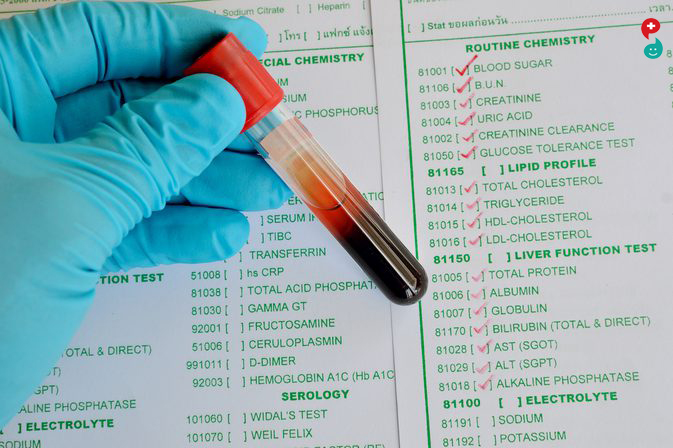
What are catecholamines?
The catecholamine blood test measures the amount of catecholamines in your body.
Catecholamines is an umbrella term for the hormones dopamine, norepinephrine, and epinephrine, which naturally occur in your body.
Doctors usually order the test to check for adrenal tumors in adults. These are tumors that affect the adrenal gland, which sits on top of the kidney. The test also checks for neuroblastomas, a cancer that starts in the sympathetic nervous system, in children.
Your body produces more catecholamines during times of stress. These hormones prepare your body for stress by making your heart beat faster and raising your blood pressure.
What is the purpose of the catecholamine blood test?
The catecholamine blood test determines whether the level of catecholamines in your blood is too high.
Most likely, your doctor has ordered a catecholamine blood test because they're concerned that you might have a pheochromocytoma. This is a tumor that grows on your adrenal gland, where catecholamines are released. Most pheochromocytomas are benign, but it's important to remove them so they don't interfere with regular adrenal function.
Your child and the catecholamine blood test
Your child's doctor may order a catecholamine blood test if they're concerned that your child may have neuroblastoma, which is a common childhood cancer. According to the American Cancer Society, 6 percent of cancers in children are neuroblastomas. The sooner a child with neuroblastoma is diagnosed and begins treatment, the better their outlook.
What symptoms might make my doctor order a catecholamine blood test?
Symptoms of pheochromocytoma
The symptoms of a pheochromocytoma, or adrenal tumor, are:
high blood pressure
rapid heartbeat
an unusually hard heartbeat
heavy sweating
severe headaches off and on for an extended period
pale skin
unexplained weight loss
feeling unusually frightened for no reason
feeling strong, unexplained anxiety
Symptoms of neuroblastoma
The symptoms of neuroblastoma are:
painless lumps of tissue under the skin
abdominal pain
chest pain
back pain
bone pain
swelling of the legs
wheezing
high blood pressure
rapid heartbeat
diarrhea
bulging eyeballs
dark areas around the eyes
any changes to the shape or size of eyes, including changes to pupil size
fever
unexplained weight loss
powered by Rubicon Project
How to prepare and what to expect
Your doctor may tell you not to eat or drink anything for 6 to 12 hours before the test. Follow your doctor's orders carefully to ensure accurate test results.
A healthcare provider will take a small sample of blood from your veins. They'll probably ask you to remain quietly seated or to lie down for as long as half an hour before your test.
A healthcare provider will tie a tourniquet around your upper arm and look for a vein large enough to insert a small needle into. When they've located the vein, they'll clean the area around it to make sure they don't introduce germs into your bloodstream. Next, they'll insert a needle connected to a small vial. They'll collect your blood in the vial. This could sting a little. They'll send the collected blood to a diagnostic lab for an accurate reading.
Sometimes the healthcare provider taking your blood sample will access one of the veins on the back of your hand instead of inside your elbow.
What might interfere with test results?
A number of common medications, foods, and beverages can interfere with catecholamine blood test results. Coffee, tea, and chocolate are examples of things you might have recently consumed that make your catecholamine levels rise. Over-the-counter (OTC) medications, such as allergy medicine, could also interfere with the reading.
Your doctor should give you a list of things to avoid before your test. Make sure to tell your doctor all of the prescription and OTC medicines you're taking.
Since even small amounts of stress affect catecholamine levels in the blood, some people's levels may rise just because they're nervous about having a blood test.
If you're a breastfeeding mother, you may also want to check with your doctor about your intake before your child's catecholamine blood test.
What are the possible outcomes?
Because catecholamines are related to even small amounts of stress, the level of catecholamines in your body changes based on whether you're standing, sitting, or lying down.
The test measures catecholamines by picogram per milliliter (pg/mL); a picogram is one-trillionth of a gram. The Mayo Clinic lists the following as normal adult levels of catecholamines:
norepinephrine
lying down: 70750 pg/mL
standing: 2001,700 pg/mL
epinephrine
lying down: undetectable up to 110 pg/mL
standing: undetectable up to 140 pg/mL
dopamine
less than 30 pg/mL with no change in posture
Childrens levels of catecholamines vary dramatically and change by the month in some cases because of their rapid growth. Your childs doctor will know what the healthy level is for your child.
High levels of catecholamines in adults or children can indicate the presence of a neuroblastoma or a pheochromocytoma. Further testing will be necessary.







